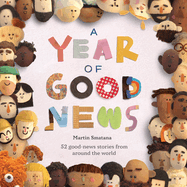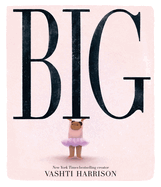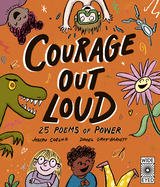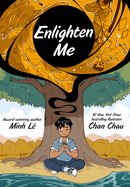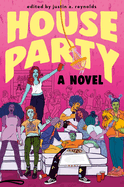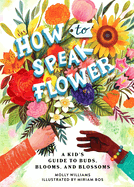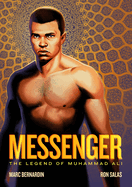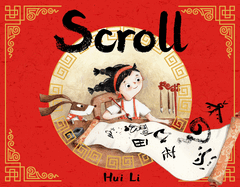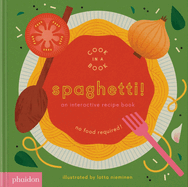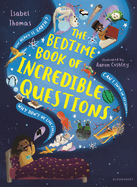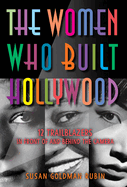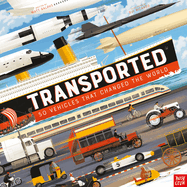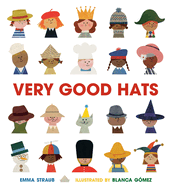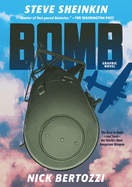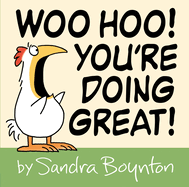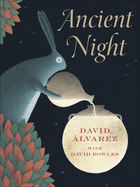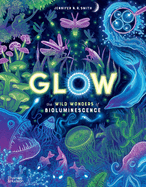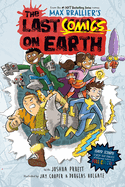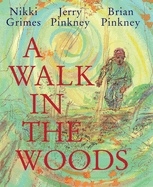Tuesday, November 14, 2023
It's the giving season, and Shelf Awareness is here to help you find sure-to-be-winner gifts for the kids, tweens, and teens in your life. For the kid who loves trains, planes, and automobiles, Transported by Matt Ralphs, illustrated by Rui Ricardo, "is an exciting and educational examination of the 50 most significant vehicles in human history." If you want to show your love and affirm a little one, Vashti Harrison's Big is an "inspiring and deeply moving picture book." And we have some great options for history buffs: the "engaging and cleverly compiled guide to North American and Mesoamerican Indigenous innovation," Indigenous Ingenuity by Deidre Havrelock and Edward Kay, as well as Susan Goldman Rubin's powerhouse The Women Who Built Hollywood.
Our Writer's Life feature spotlights young chef, social entrepreneur, and food justice advocate Michael Platt, and we interview the editors of the long-running, bestselling Brain Quest brand. Plus, check out our recent round-up of cookbooks for kids!
A Year of Good News
by Martin Smatana, transl. by Julia Sherwood and Peter Sherwood
In A Year of Good News, animated filmmaker Martin Smatana spreads happiness by sharing 52 good-news stories from around the world. In this uplifting collection of everyday, often inconspicuous stories, ably translated from Slovak by Julia and Peter Sherwood, Smatana puts "good news under the spotlight" and shows readers bright spots can always be found. Highlights include the Canadian post office sending postcards with messages of solidarity to every household in the country during the Covid-19 lockdown, and a 109-year-old Australian man knitting sweaters for penguins to stop them from swallowing oil while cleaning themselves following a spill. These touching, concise stories, just one or two sentences each, are accompanied by Smatana's charming textile illustrations made from leftover clothing scraps. Together, the stories and artwork provide hope and comfort. --Lana Barnes, freelance reviewer and proofreader
Big
by Vashti Harrison
The inspiring and deeply moving picture book Big tells the story of a Black child "with a big laugh and a big heart and very big dreams." She is praised by caring adults for being "a big girl," and this is good--until it's not. Suddenly, big means getting stuck in a swing, being teased by other kids, and finding herself belittled by adults. It means feeling "out of place, exposed, [and] judged." Until, finally, powerfully, this wonderful girl begins to "shake off" the words of others, to "see things more clearly," and to "make more space for herself." Little Leaders series creator Vashti Harrison's succinct text is emotionally resonant and gracefully executed, as are her beautifully rendered digital and chalk pastel illustrations, both of which keep the focus clearly on the child and her rewarding journey to self-love. The gatefold at the heart of the book is stunning, as the child remembers who she is... and it's good! --Lynn Becker, reviewer, blogger, and children's book author
Courage Out Loud: 25 Poems of Power
by Joseph Coelho, illus. by Daniel Gray-Barnett
Children's poet Joseph Coelho (Grandpa's Stories) and illustrator Daniel Gray-Barnett (Smile Out Loud) ask young readers to "face your fears and find your courage with poetry" in their third read-aloud poetry collaboration, Courage Out Loud. This installation of the Poetry to Perform series focuses less on the whimsical and more on the emotional, tackling issues of bravery, fear, and sadness through rhymes that children can practice reading aloud: "A poem has the might/ to give your passion bite,/ to let your words take flight!/ A poem has the might./ Your words might change a mind,/ inspire someone to be kind." Each page comes with a craft prompt from Coelho and entertaining, cartoon-style illustrations from Gray-Barnett. Courage Out Loud should be a useful writing tool in the arsenals of teachers and librarians, and a practical gift for aspiring poets. --Nicole Brinkley, bookseller and writer
Enlighten Me
by Minh Lê, illus. by Chan Chau
Stories of the Buddha bring meditation practices into focus in Enlighten Me, a thought-provoking middle-grade graphic novel by Minh Lê (Drawn Together), illustrated by Chan Chau (The Rise (and Falls) of Jackie Chan).
In the aftermath of a fight at school, Binh's parents decide to take the whole family to a weekend silent meditation camp. Binh would prefer to play video games but, as he learns about the Buddha and his imagination travels with the stories about the spiritual leader, Binh realizes meditation might be worth trying. Lê's dialogue is direct and expressive as it teaches the importance of being present in the moment. Chau's spirited illustrations are presented in dynamic panels that often overlap each other or are broken by energetic figures. Informative, imaginative, and quietly impressive, Enlighten Me inspires readers to take a deep breath. --Kyla Paterno, freelance reviewer
Grandparents
by Ariel Andrés Almada, illus. by Sonja Wimmer, transl. by Jon Brokenbrow
The loving, whimsical Grandparents by Ariel Andrés Almada, illustrated by Sonja Wimmer, is an ode to the wonderful relationships between children and their grandparents. This fifth title in the Family Love series opens with a girl writing a letter to her grandparents "that tastes of happiness mixed with love." The book follows this with a series of stylized and surreal illustrations of diverse children and their elders. Sprinkled throughout are spreads of the original letter-writer growing up and realizing how important these intergenerational experiences are. This picture book, capably translated from the Spanish by Jon Brokenbrow, will likely encourage children to keep their special memories alive, as it invites them to reflect on their own funny moments, quiet times, and adventures with Grandma and/or Grandpa. A perfect book to bring the family closer together at holiday time, and to encourage children to write their own letters. --Melinda Greenblatt, freelance book reviewer
House Party
by justin a. reynolds, editor
The graduating class of a high school in one of Chicago's well-off suburbs gathers for an epic end-of-year celebration in House Party, a lively YA contemporary novel edited by justin a. reynolds (Opposite of Always). Eleven alternating narrators--written by 10 different authors--each have their own goals for the night. In Christina Hammonds Reed's "The Popular Girl," Black teen Penny wants to take her mind off her mother's illness and her recent breakup with Jenny S., "the former love of my life." Jrue, "The Class Clown" (justin a. reynolds) is determined to go down in history as "the best prankster our school's ever seen." Even "The Cool Mom" (Ryan La Sala), Carla, who is white, attends to find her missing dog. But nothing goes according to the characters' plans--romances bloom, friendships are tested, and rivalries explode. House Party is an entertaining romp through a night of chaotic celebration and a bittersweet snapshot of teenagers transitioning from adolescence to adulthood. --Alanna Felton, freelance reviewer
How to Speak Flower: A Kid's Guide to Buds, Blooms, and Blossoms
by Molly Williams, illus. by Miriam Bos
For thousands of years, people have used flowers to communicate, heal, nourish, and prettify. Molly Williams's How to Speak Flower is a lovely compendium of flower legend, science, and symbolism--in short, a brief yet cohesive history of floriography. Packed with fun facts, charts, crafts, and quizzes, this is a perfect gift for budding fans of floriography. Williams's light, friendly tone belies the depth of information she covers in this guide. Sections about flower life cycles, traditional flower uses (lavender for relaxation), and floral associations (petunias can represent anger!) share space with quizzes ("What's your flower power?") and floral bath bomb recipes. Dutch multidisciplinary artist Miriam Bos charmingly illustrates with bright and delicate spot art, ensuring readers can return again and again for the sheer joy of the collaboration. --Emilie Coulter, freelance writer and editor
Indigenous Ingenuity: A Celebration of Traditional North American Knowledge
by Deidre Havrelock and Edward Kay, illus. by Kalila Fuller
Indigenous Ingenuity by Deidre Havrelock (Buffalo Wild!), member of the Saddle Lake Cree Nation, and Edward Kay (Gross Science series) is an engaging and cleverly compiled guide to North American and Mesoamerican Indigenous innovation. STEM topics (housing, medicine, clothing, agriculture, and hunting among them) are compellingly and conversationally discussed, including unexpected topics like Aztec warrior education, and eccentric ones like the invention of the whoopee cushion. Grayscale boxes spotlight enthralling facts (Ancient Romans imported "the best urine" from Portugal to use as mouthwash) and creative activities (how to write a pictographic story; a weaving craft). Photos and spot art by Kalila Fuller (Finding My Dance) depict artifacts that include Tlingit armor, implements such as ancient fish traps, scientific processes, people of note, and more. The authors correct misconceptions, and herald interconnectedness and future-minded thinking. An authors' note, introduction, epilogue, glossary, bibliography, and index supplement this necessary text. --Samantha Zaboski, freelance editor and reviewer
Messenger: The Legend of Muhammad Ali
by Marc Bernardin, illus. by Ron Salas
Marc Bernadin (Adora and the Distance) reimagines scenes from the life of a giant in the nuanced, inspirational graphic novel Messenger: The Legend of Muhammad Ali, illustrated by Ron Salas (Northguard).
This work of young adult nonfiction aims to capture the epic essence of the boxer rather than a complete, true-to-life picture. Bernadin focuses primarily on iconic moments like Ali's 1960 Olympic victory, his first meeting with Malcolm X, and his role in the 1990 release of American hostages from Iraq. Each chapter illustrates the words of Ali's first boxing coach, "What makes a fighter great is what they do after they get hit." Salas's sensitively rendered grayscale art vividly conveys every flicker of his subjects' emotions.
Bernadin captures the feel of a mythic hero without glossing over Ali's complexities. This story should captivate sports fans and anyone looking for an inspiring story of a fighter who "shook up the world." --Jaclyn Fulwood, youth experience manager, Dayton Metro Library
Scroll
by Hui Li
Hui Li brilliantly transforms the history of Chinese characters into a marvelous adventure in Scrolls. Watching Grandpa practice calligraphy inspires Lulu (and her never-far-away pup, Dumpling) to try it. Lulu's drawing of "DOOR" opens a portal where the pictographs she's been learning come alive: a helpful bird, a riverside village, a fiery dragon. Cleverly, Lulu's paintbrush enables a safe return home, much like Harold's purple crayon. Li's first solo author/artist title, created in watercolor, colored pencil, and Chinese ink, is an imaginative, purposefully rendered comic picture-book. Li adds Chinese characters across the page-tops, encouraging readers to find them within her inviting drawings. "Imagine if every character you draw has its own story," Li's author's note muses. Here, it magically does. --Terry Hong
Spaghetti!: An Interactive Recipe Book
by Lotta Nieminen
Hungry toddlers will be heading for the kitchen thanks to the appetizing and high-engagement board book Spaghetti!, the fifth in the My First Cookbooks series. With clean lines and a bold color palette, Lotta Nieminen's mixed-media artwork details the step-by-step preparation of four servings of pasta with a garlicky marinara sauce. Straightforward text alongside labeled cooking tools and ingredients clarifies quantities, provides cooking instructions, and offers helpful tips to build culinary literacy: "If [the spaghetti is] slightly soft and chewy, it is ready." Thick pages nestle sturdy interactive elements including sliding tabs, a flap, and a brilliantly designed final page that invites readers to twirl their finished plate of spaghetti using a fork removed from the spread prior. A cookbook sure to earn rave reviews among discerning high-chair critics. --Kit Ballenger, youth librarian, Help Your Shelf
Tenacious: Fifteen Adventures Alongside Disabled Athletes
by Patty Cisneros Prevo, illus. by Dion MDB
The dynamic picture book Tenacious: Fifteen Adventures Alongside Disabled Athletes explores the feats of accomplished children and adults as they "race and jump and shoot and soar/ in sports events and so much more."
Debut author Patty Cisneros Prevo, a gold medal-winning Paralympian in wheelchair basketball, pairs melodic rhyming text ("Paddle further, surf the wave/ Trust yourself. Be bold! Be brave!") with biographies of athletes. Each bio includes the athlete's daily challenge and daily joy; for example, Meira Va'a Nelson, a Pacific Islander who competes in adaptive surfing, is challenged daily by the loss of her daughter but finds joy in the rest of her family. Dion MBD (Where We Come From) illustrates color-rich images of the athletes that evoke movement and excitement. The book begins and ends with the athletes gliding forward together as one, faces set in determination, anticipating their next adventure. --Kieran Slattery, freelance reviewer, teacher, co-creator of Gender Inclusive Classrooms
The Bedtime Book of Incredible Questions
by Isabel Thomas, illus. by Aaron Cushley
"Could I swim in ice cream?" "What's the opposite of a spider?" "Why can't I tickle myself?" "Are cats liquid or solid?" Good questions all, and they're among dozens given serious consideration in The Bedtime Book of Incredible Questions. As Isabel Thomas (Moth) explains, the book is dedicated to the idea that "science is about asking questions" and "each one is a stepping stone on the path to understanding the universe and everything in it." Thomas's answers are informed by scientific research and illustrated with equally finespun art by Aaron Cushley (J.R.R. Tolkien) that teems with children and animals hot on the trail of knowledge. There are also images of curiosities like, say, two terrified-looking flowers riding a skateboard down a ramp ("Do plants have feelings?"). --Nell Beram, freelance writer and YA author
The Women Who Built Hollywood: 12 Trailblazers in Front of and Behind the Camera
by Susan Goldman Rubin
In The Women Who Built Hollywood, Susan Goldman Rubin profiles 12 female powerhouses who made big contributions when movies were a new American art form in the early 20th century. Among those featured are Anna May Wong (1905-1961), the first Chinese American movie star, and actress Hattie McDaniel (1893-1952), the first African American to win an Academy Award. Replete with archival black-and-white photos, this galvanic book gestures at the secret to so many of its subjects' long careers in Hollywood, both on-screen and behind the scenes: as Frances Marion (1888-1973), the first woman to receive an Oscar for writing, says here, "I hope my story shows one thing--how many women gave me real aid when I stood at the crossroads." --Nell Beram, freelance writer and YA author
Transported: 50 Vehicles that Changed the World
by Matt Ralphs, illus. by Rui Ricardo
Transported by Matt Ralphs and illustrated by debut children's book artist Rui Ricardo is an exciting and educational examination of the 50 most significant vehicles in human history. Beginning with the ancient Polynesian canoe and working chronologically toward the electric and solar-powered vehicles of the present, Ralphs (Norse Myths) provides a litany of fun facts about each vehicle and explains how transportation factors into all aspects of human life. This includes seemingly simple activities like cargo hauling and farming to extravagant displays of luxury, power, and scientific advancement. Ricardo's realistic, detailed illustrations feature magnificent scale and dynamic movement: wheels churning up dust, sails swelling with the wind, smoke billowing out of chimney stacks, and propellers whirring at top speed. Transported is a great gift for young readers interested in history, science, and exploration. --Cade Williams, freelance reviewer
More Gift Ideas
The Writer's Life
Michael Platt: When Cooking Mirrors Culture
 |
|
| (photo: Danita Platt) | |
Cooking has given Kids Baking Championship alum Michael Platt a large platform to advocate for issues he's passionate about, such as racial justice and food security. He featured these themes in his first cookbook, Michael's Desserts: Sweets for a Cause, and revisits them in his second cookbook, Recipes for Change (Abrams, $18.99), which includes 12 recipes inspired by moments in Black history. He revamps traditional cuisine to create an interactive narrative that reflects the harm--and the hope--of Black people living in the United States. Platt spoke with Shelf Awareness about food as family, food as history, and food as justice.
Each dish included in Recipes for Change is served up with a slice of history. What are your earliest memories related to food or eating with loved ones?
I've always been in the kitchen with my family. When I was three or four years old, my mom taught me and my older brother table etiquette. Being a home economics teacher, she wanted us to learn basic skills early, like how to correctly eat green beans versus, say, asparagus. How to pour milk for our cereal. How to properly cut certain foods. I do remember feeling curious at that point. I also found not being able to eat green beans (especially long ones) with my hands annoying.
But it wasn't until I was nine or 10 that I really got interested in what was happening in the kitchen. My maternal grandmother was the first person I baked with--I got to take the lead on making a cake for a family dinner. It was a two-layer chocolate cake with chocolate icing. From there, I started making random stuff I saw on YouTube and watching other cooking videos.
What role do you think food plays in the lives and storytelling of Black communities?
Food plays a really important part in everyone's life. We all learn how to cook from someone. In my family, it's been a parent. I can track food I eat now to similar dishes that my grandmother and great-grandparents ate. So, it's a vital part of being able to connect with your personal history. My family's sweet potato pie recipe, in particular, is one we can trace back generations. We all know it so well that no one has written down the recipe.
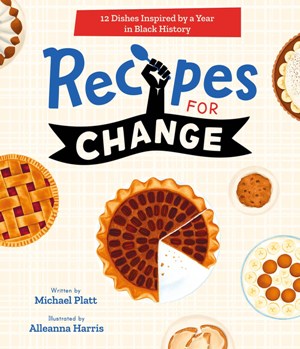 How does food justice connect to Recipes for Change?
How does food justice connect to Recipes for Change?
I regularly collaborate with organizations like PLATTE and No Kid Hungry that are working to address food insecurity, so I remain hyper-aware of how food has supported certain communities throughout history. For example, "The Montgomery Bus Boycott's Pound Cake" recipe in the book is based on a woman named Georgia Gilmore who sold pound cakes to raise money during the bus boycotts. This ultimately helped to supplement protestors' and organizers' incomes, as folks chose not to work to demand more civil liberties or couldn't get to work because of the boycott. This book illustrates how food helped to feed and fuel notable moments, movements, and individuals in Black history.
Which of these had the most influence on the recipes you decided to include in the book: people, places, events, or ingredients?
They all did! But the people were shaped by the times they were living in. So, if you remove any person, all these stories would likely be really different in terms of ending and impact. In fact, I hadn't even heard of Georgia Gilmore until I started researching the book.
And I very much enjoyed figuring out how to incorporate parts of the "I Have a Dream" speech into my "Martin Luther King's Favorite Pecan Pie" recipe. My whole life, I have been hearing and seeing images from that moment, starting with a photo hanging on the wall in my grandmother's bathroom.
Was there a recipe you still wish had made the "final cut"?
I wish my recipe for Johnny Cakes could have been included in this book. I love them and their history--and they're delicious! Fun fact: they were also originally known as "journey cakes" because they were a food that the enslaved and Indigenous peoples of North America carried with them. Later, they were a staple for folks involved with the Selma to Montgomery March.
What content in your cookbook might be particularly interesting for other young chefs?
I think all the recipes give young chefs information and skills they can use in other dishes. For instance, "The Montgomery Bus Boycott's Pound Cake" recipe involves creaming butter and sugar until it's light and fluffy. This is a kind of emulsion, and emulsions are used all the time to make sauces and salad dressings, as well as to stabilize baked goods. I also think the "Juneteenth's Red Ice Pops" are really customizable for young chefs--and are a great way for them to experiment with different flavors.
How has your cooking style evolved over the years?
I've stopped using certain techniques that other chefs swear by. Like, I no longer use fondant or buttercream on baked goods because I think other icing tastes better. Also, I continue to learn more about Black history and African American foodways. One aspect in particular I am fascinated by is the large role pork fat (lard) has played in African American food culture. A lot of our foods have a stigma that they are unhealthy (due to being potentially high in cholesterol and sodium). But Black people in this country are very resourceful. We can use every single part of pig when cooking: the feet, ears, intestines. We also needed to cure meat products like bacon and ham to prevent spoilage. And what didn't have enough taste to be edible was repurposed into soap or added in while mixing the batter to keep bread and cakes moist. We have always represented a "zero waste" perspective. And the same can be said of our use of vegetables. We use a large variety of field greens--collard, mustard, and kale--and will drink the broth too!
What are you working on now? Willing to share any teasers about your next professional endeavor?
I'm working on a new cookbook: currently planning the theme, recipes, and stories that will be included. The next step after that will be testing the recipes to put it all together. It's a combo of recipes I know very well that are straightforward, so I hope they will all be easy to incorporate. But sometimes there ends up being one that I need to make and tweak multiple times before it's ready, like the cinnamon rolls recipe that was in my first book. I am also working on a food documentary with my brother, who is a filmmaker. It's about the history and importance of lard.
Have you purchased a cookbook recently?
Yes! Black Power Kitchen by Ghetto Gastro founders Jon Gray, Lester Walker, and Pierre Serrao and Osayi Endolyn. I like this cookbook for the overall design. There are interviews, artwork, poems, stories, great photography, and (of course) recipes. --Rachel Werner, author and teaching artist at Hugo House, Lighthouse Writers Workshop, and The Loft Literary Center
Book Candy
Book Candy
"To celebrate the 400th anniversary of Shakespeare's First Folio, BBC Future investigates a mysterious vanishing--a play that hasn't been seen for centuries."
---
"Dunderhead and other 'nicer' ways to say stupid," courtesy of Merriam-Webster.
---
Watch the trailer for the long-lost first film adaptation of F. Scott Fitzgerald's The Great Gatsby (1926), courtesy of Open Culture.
---
Mental Floss investigated the mysterious case of "Ambrose Bierce, the dark humorist who disappeared."
Great Reads
From Brain Quest Kid to Editor
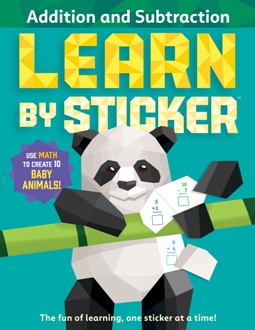 Alisha Zucker, a former New York City third-grade teacher and curriculum writer, serves as senior editor on the educational resources team at Workman Kids. She oversaw the revision of the Brain Quest 30th Anniversary workbooks, and has developed two new series, Learn by Sticker and Learn to Write.
Alisha Zucker, a former New York City third-grade teacher and curriculum writer, serves as senior editor on the educational resources team at Workman Kids. She oversaw the revision of the Brain Quest 30th Anniversary workbooks, and has developed two new series, Learn by Sticker and Learn to Write.
Karen Edwards has written and developed materials for educators and students, and joined Workman Kids in 2018 as editorial director of educational resources to develop innovative material for Brain Quest and The Big Fat Notebooks.
Here, Edwards and Zucker give Shelf readers a peek into the long-lasting Brain Quest brand, and how they create educational content that is appreciated by teachers and caretakers alike.
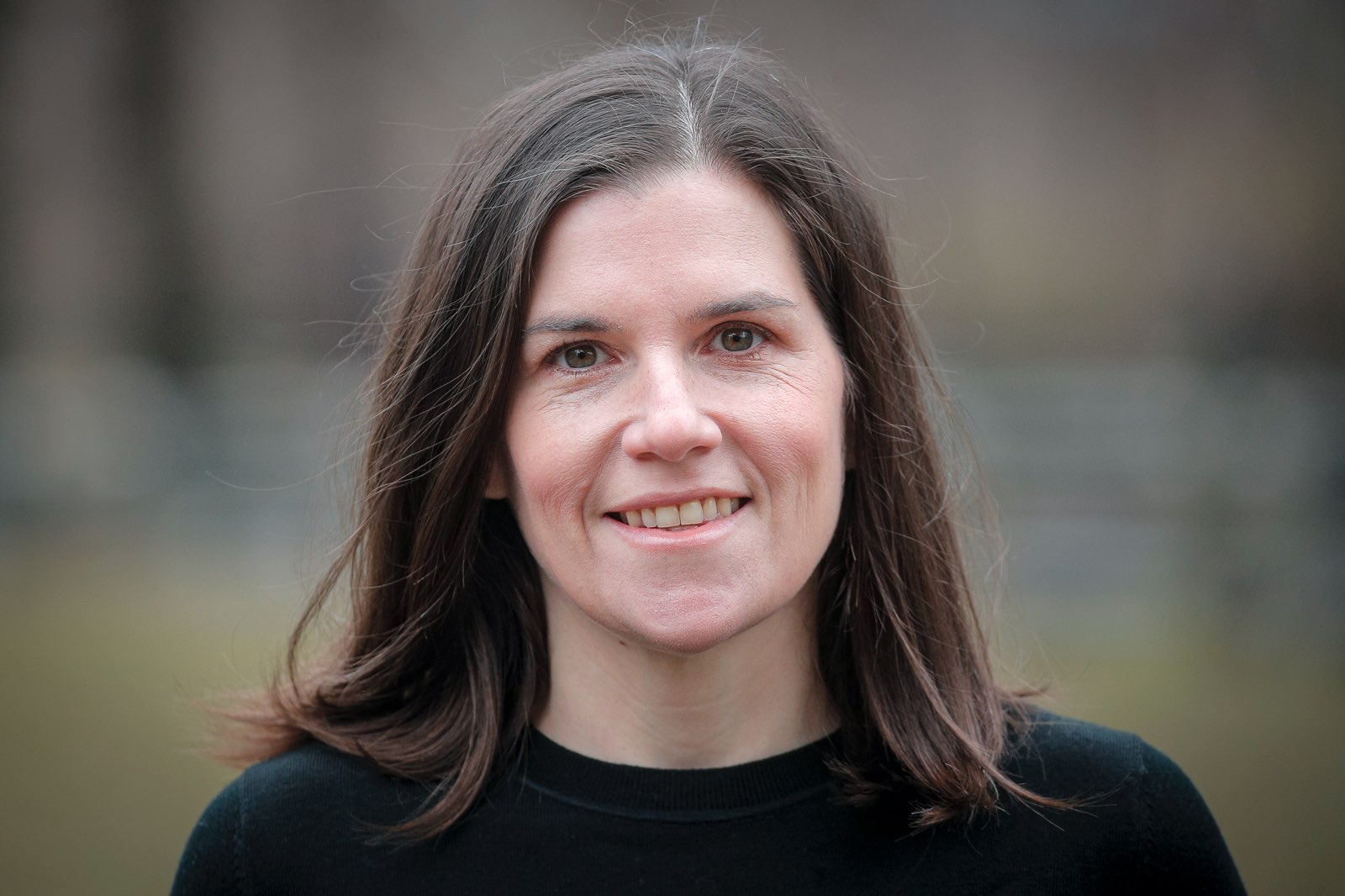 |
|
| Alisha Zucker (photo: Brendan McDermid/Reuters) | |
Alisha Zucker: I was a Brain Quest Kid! My family used to drive to Florida every year from Ohio--that's an 18-hour drive--and my sister and I would play Brain Quest for a lot of it.
Karen, you just oversaw a complete revamp of Brain Quest for our 30th anniversary so I wanted to ask: What was important for you to preserve from the original Brain Quest? And what did you want to get into the new version?
Karen Edwards: I'm so glad that I have a Brain Quest kid working on the brand. We have several Brain Quest kids on our team, and they have similar back-seat quiz session stories too!
Brain Quest has a history and tradition of celebrating learning that we wanted to preserve. We also wanted to preserve the academic rigor, accessibility, and relatability of content. It was important to us that today's kids connect with the books and smart cards in the same way previous generations did.
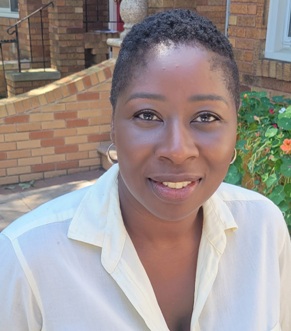 |
|
| Karen Edwards | |
Our updates address the inclusion of technology, specific computer science and technology standards, and coding that are part of today's curriculum. We also expanded the social emotional learning component by increasing opportunities for kids to explore their interactions with each other, and learn to express their emotions, and be part of a community.
Is there anything you, as a Brain Quest kid, were excited to see in the revision?
Zucker: I was really touched and excited by the focus on being a good person for the younger smart cards--there are questions related to being a good neighbor and a good friend, and what it looks like to be a part of the community. Brain Quest isn't just about core academic practice, it's about how to be a person in the world, and a productive person.
What's the most exciting part for you about making books?
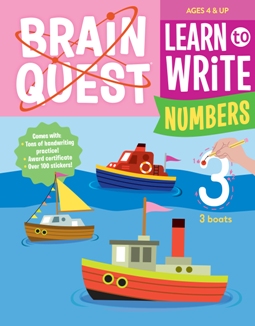 Edwards: It's challenging to present children with content that feels fresh and appealing. Imagine a child has been in school for six to eight hours working on math, English, or science. And then they go home and are told that they have to do more work? Or worse: they are forced to do schoolwork on weekends and over the summer. I'd rebel, too. So, finding a way to connect with a child, to supplement their learning in a way that makes them want to do the work, is highly rewarding.
Edwards: It's challenging to present children with content that feels fresh and appealing. Imagine a child has been in school for six to eight hours working on math, English, or science. And then they go home and are told that they have to do more work? Or worse: they are forced to do schoolwork on weekends and over the summer. I'd rebel, too. So, finding a way to connect with a child, to supplement their learning in a way that makes them want to do the work, is highly rewarding.
Zucker: Yes! We talked about that when we were developing the Learn to Write series. Those were the first books I worked on from idea to completion, and it's been really rewarding to see the response from four- and five-years-olds. It's fun to watch the videos on social media and see the kids happily filling out the workbooks.
Edwards: Right--get them excited about doing the work. Reward them! I mean, is there anything more mundane than handwriting practice? I've been so impressed with the way that you worked with our design team to make the books visually exciting, with varied opportunities for practice. And the emphasis on celebrating the child throughout--that focus on the user experience shows such respect for the child.
Zucker: And have you noticed that parents are always happy when you give a Brain Quest gift? Teachers, too. I think it's because we make our books with teachers in mind--every Brain Quest book and workbook is written by or edited and vetted by teachers.
We're also thoughtful about approaching the same content in different ways. Let's say you're in kindergarten. You can start with the handwriting practice in Learn to Write, or you can use the Brain Quest smart card deck to play quiz games, and then you have the workbook and Learn by Sticker for fun practice.
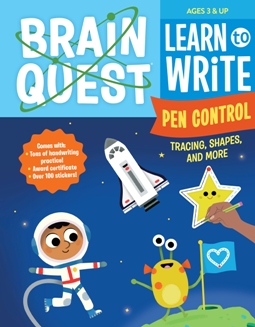 Edwards: Different roads leading to the same destination.
Edwards: Different roads leading to the same destination.
Zucker: That's right. The activities in Learn by Sticker Math are not a repeat of anything that they've seen in a Brain Quest workbook or in the smart cards. They may have learned or practiced the math, but this is a completely different approach to that same concept. It's a robust way to supplement a kid's learning from school without it feeling like "not this again."
Edwards: I think one of the hallmarks of Brain Quest is our distinct approach. The focus is on how we can make this experience feel enjoyable for the child, how we can make it valuable for a teacher or parent. There's that temptation to cram as many exercises as possible on a page to give them that opportunity to practice; and the challenge is to find that balance--the right amount of practice while still making the page feel welcoming.
So, what's the most exciting part for you about making a book?
 Zucker: There are so many exciting parts. It's such a creative job. Not only do we figure out what goes on the page, but we think about who the illustrator should be, what the visual themes are going to be, and then we also talk to marketing and pitch ideas to them.
Zucker: There are so many exciting parts. It's such a creative job. Not only do we figure out what goes on the page, but we think about who the illustrator should be, what the visual themes are going to be, and then we also talk to marketing and pitch ideas to them.
I told you this, I think--I was at a coffee shop in Toronto, Canada, and a child was doing Learn by Sticker, and I went over and introduced myself to the mom. And I was like, "I know this is weird. I made this book!" She gushed and wanted to know when the next one was coming out--it was just amazing.
Edwards: That's so rewarding!
Zucker: It was really exciting to know that this kid was engaged and had fun--and it was also good math practice for him.
Edwards: It's great to see our mission come to life: to make learning fun; to make learning accessible; to make kids feel seen and valued.


